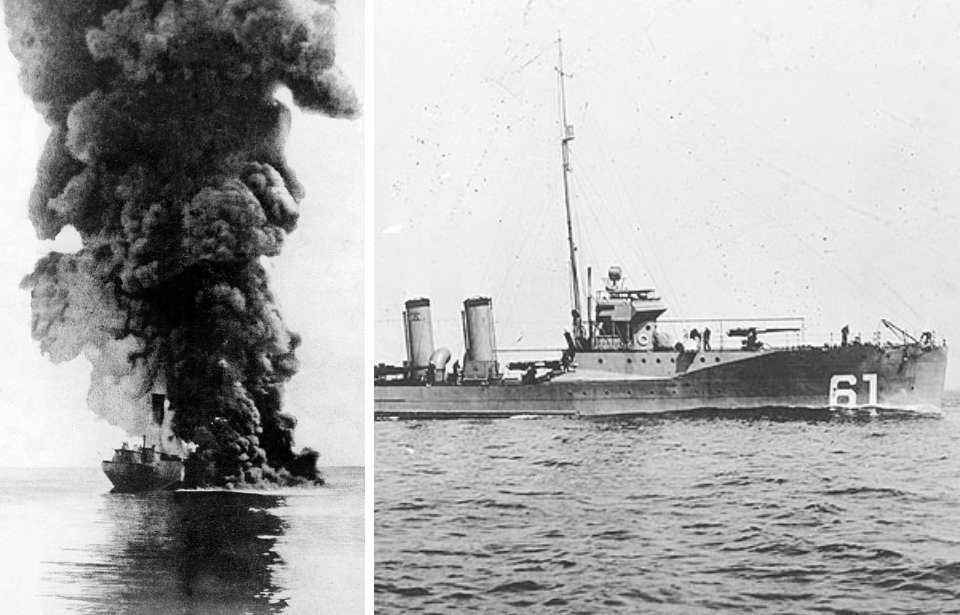On December 6, 1917, the Tucker-class destroyer USS Jacob Jones (DD-61) was sailing from Brest, France to Queenstown, Ireland. However, the ship never reached its destination. Instead, it wound up at the bottom of the ocean, thanks to a German U-boat strike, where it lay undiscovered for over a century.
Building the USS Jacob Jones
The USS Jacob Jones was authorized in 1913 as the fifth vessel in the Tucker-class of destroyers. Named for the prominent US Navy officer who served during the War of 1812, her keel was laid down in 1914. She was commissioned just under two years later, with Lt. Cmdr. William S. Pye in command. When the US joined the First World War on April 6, 1917, Jacob Jones patroled the coast of Virginia.
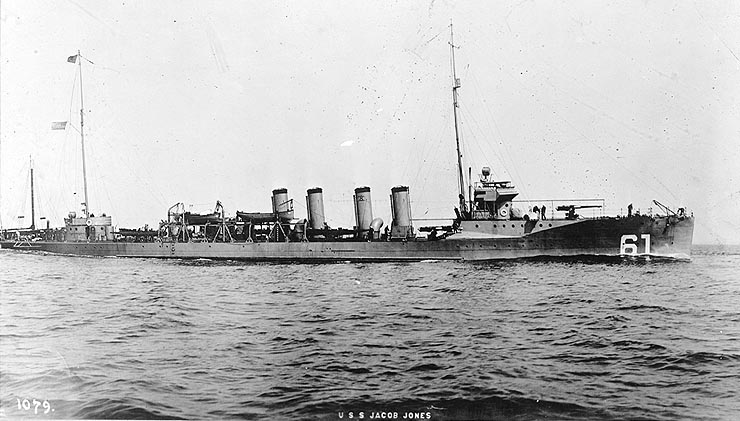
By May 7 of that year, the destroyer was en route to Europe, equipped with four 4-inch .50-caliber guns and eight 8-inch by 21-inch torpedo tubes. Her crew totaled around 100 men. Ten days later, Jacob Jones arrived in Queenstown, Ireland and began patrols in the Irish Sea.
The ruthless German U-boat strategy
Besides patrols and escorts, the USS Jacob Jones had to be cautious of German U-boats. The business of submarine warfare was complicated and ruthless. In the early stage of the war, U-boats surfaced before firing at a ship, giving those onboard enough time to escape the imminent strike.
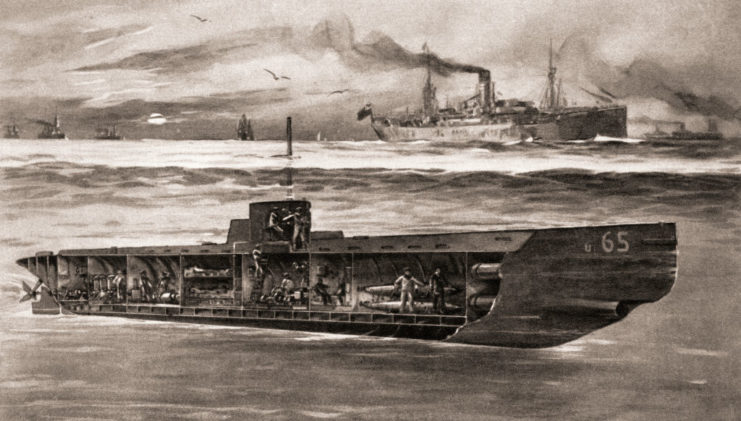
Beginning in February 1915, the Germans shifted their tactics to an unprecedented form of attack: firing at ships, including neutral and passenger vessels, without warning. The threat of a U-boat lurking beneath the surface, poised to strike at any moment, was an entirely new fear for US sailors onboard destroyers like Jacob Jones.
In just seven short months, Jacob Jones was destroyed by a U-boat strike. However, she performed several impressive rescue operations during this period. On July 8, 1917, she rescued 44 survivors from the British steamship Valetta, which sank after being struck by a U-boat. That same month, she saved another 26 passengers and crew from the sinking Dafila, and later rescued 309 survivors from the armed merchant cruiser RMS Orama (1911).
Sinking of the USS Jacob Jones
At 4:20 PM on December 6, 1917, the USS Jacob Jones sighted a torpedo wake in the water while she sailed toward Ireland. Cmdr. David W. Bagley ordered the destroyer to try to escape the torpedo, but it struck the starboard side three feet below the water line. With her fuel oil tank ruptured, the destroyer’s fate was sealed.
Her stern began to sink, exploding the depth charges onboard and prompting Cmdr. Bagley to order his men to abandon ship. Two shots were fired from one of Jacob Jones‘ four-inch guns, a final plea for help. Eight minutes after she was struck, the vessel sank. The number of crewmen that went down with her varies, depending on the source.
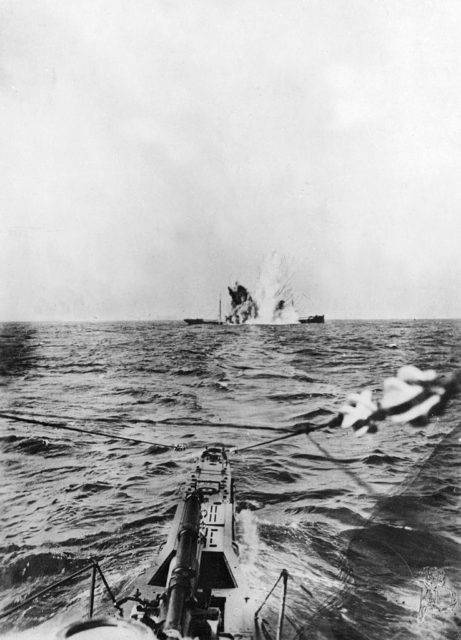
Cmdr. Bagley later described the horrible scene in his diary, writing, “As the ship began sinking, I jumped overboard. The ship sank stern first and twisted slowly through nearly 180 degrees as she swung upright. From this nearly vertical position, bow in air to about the forward funnel, she went straight down. […] Immediate efforts were made to get the survivors on the rafts and then get rafts and boats together.”
Those who managed to escape on life rafts or debris struggled to stay alive in the frigid waters of the Atlantic Ocean. Out of the depths, a German U-boat SM U-53 surfaced. The vessel’s commander, Kapitänleutnant Hans Rose, took injured crew members Albert De Mello and John Francis Murphy as prisoners, before radioing in the location to the American base in Queenstown. His only condition for the Americans was to give his crew one hour to escape before rescue ships arrived on-scene.
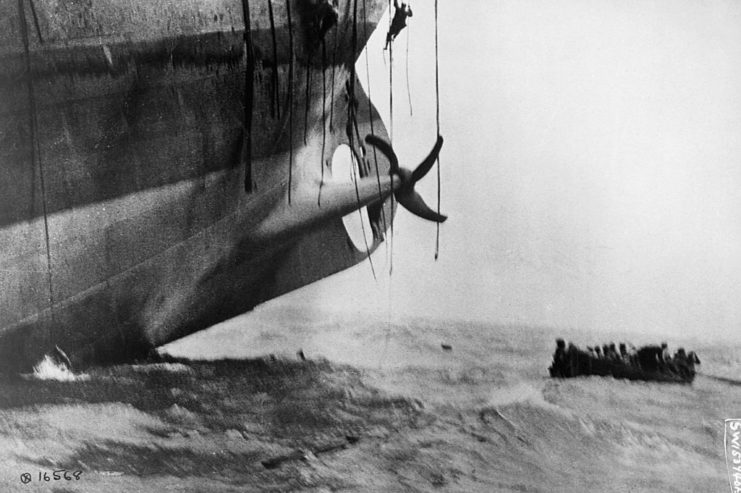
While they waited to be rescued, several crewmen gave their lives to help their comrades survive. Lt. Stanton F. Kalk helped men out of the water and into lifeboats, actions which led to his eventual death from exhaustion and exposure. He was posthumously awarded the Navy Distinguished Service Medal.
Several hours after the sinking, the HMS Camellia (1915) and the American steamer Catalina began rescue operations, with the last of the survivors being rescued at 8:30 AM on December 7 by the HMS Insolent (1881).
The wreck of the USS Jacob Jones is discovered
In August 2022, a team of British divers announced they’d discovered the wreck of USS Jacob Jones some 400 feet below the waters of the Atlantic Ocean, around 60 nautical miles south of Cornwall, England. The team was able to positively identify the sunken vessel by locating her bell. The word “Jacob” was still visible on it, despite over 100 years of rust and water damage.
The UK Hydrographic Office provided the six-member dive team with the GPS coordinates for wrecks in the area – a record of where wrecks have been located, but not what they might be. During their second day of searching, the team discovered the remains of Jacob Jones.
Speaking with Dive Magazine, Dominic Robinson, head of diving and training with the British Sub-Aqua Club (BSAC), said, “The ship was about 115 [meters] to the seabed and 110 [meters] to the top of the wreck. It was very clear that it was Jacob Jones immediately – you can see its name written on parts of the shipwreck.”
He added that “no human remains were found or personal [artifacts], but for me, the thing that brought it home was the bent prop shaft – which shows the trauma the vessel must have been through when it was torpedoed. Absolutely incredible.”
The discovery marked an incredible moment in naval history, since Jacob Jones was the first ever US destroyer to be sunk by an enemy vessel. The loss of the ship was also one of the first major casualties the US suffered after its entry into WWI, and it was tragically ironic, as she’d reportedly “rescued from sinking ships more survivors than any other vessel.”
More from us: USS Grayback (SS-208) Found After 75 Years; What Was Onboard Was Unexpected
Now that the wreck of Jacob Jones has been located, the British dive team plans to begin talks with the US regarding the collection of artifacts from the vessel, to bring closure to the families of the crewmen who lost their lives at sea.
